Kraków 2011-11-25
Two Ciampino - Balice flights.
The first in 1976, the second in 2011.
Flights on the Krakow - Rome route have become extremely popular in Krakow since 1978, when our compatriot, Cardinal Karol Wojtyła, who became Saint John Paul II the Great, was elected to the Holy See. And despite the fact that on April 2, 2005, he departed for the Father's House, the desire of his compatriots to visit His Tomb did not diminish. Among other things, this is why flights on this route are still extremely popular. And they will remain so for many years to come.

Two flights.
In this article, I was tempted to compare journeys on the same route taken in 1976 and now, i.e. in 2011. In a word - What has changed for the average traveler over 35 years? The exact route is from Ciampino Airport (CIA) near Rome and landing at Balice Airport (KRK) near Krakow.
In 1976, the only two airlines that operated this route were Polish LOT Polish Airlines and Italian Alitalia. Edward Gierek, the first secretary of the Polish United Workers' Party, the de facto leader of the People's Republic of Poland, opened a window to the world for Poles. He purchased Russian Iliuszyn Il-62 planes to serve the routes across Wielka Woda, and began to fly with Paris, London and Rome with Tu-134 planes. Of course, also with Moscow and Leningrad in the CCCP. As a result of his decision, the governments first came to an agreement, and then the airlines. At that time, the frequency of connections, airport charges, pre-flight inspections, refueling and others were established. This is how PLL LOT and Alitalia agreed. Italians flew Douglas DC-9 planes, Poles flew Tupolew Tu-134, Tu-134 A planes. Generally, the contract concerned the Rome-Warsaw-Rome connection. But because due to communist restrictions (see below) and the much poorer Polish society, the use of Tu-134 seats was small. In order to improve this indicator, LOT Polish Airlines decided to make some flights with a stopover in Krakow. The word profitability was not used at that time.
Our national carrier, LOT Polish Airlines, is well known, but Alitalia is not.
Alitalia is the Italian national carrier, operating since 1946. The Italian state treasury remains the dominant shareholder. The rest of the action is in the hands of the employees. The main industry investor, Air France, owns a 2% stake. The main Alitalia hub is located at Fiumicino Airport (FCO) 20 km from the center of Rome, south-west, almost on the Tyrrhenian Sea. The carrier currently has around 180 aircraft.
Currently, flights on the route Krakow (Balice) - Rome (Fiumicino or Ciampino) are offered by the following airlines: PLL LOT, Alitalia, Enter Air, Ryanair, Easy Jet, Czech Airlines, Austrian Airlainers, Brussels Airlines. These companies fly regularly in the summer and less frequently in the winter.
At this point, a few words about Rome's airports. Rome currently has two airports. The first of them was built in the town of Ciampino near Rome, in the south-east direction, about 15 km from the center of Rome. 1918 can be assumed as the date of establishment of the airport. The airport served military functions. But already in the 1930s, passenger traffic began to develop intensively there. LOT Polish Airlines planes from Warsaw also arrived here. A huge boom in passenger and freight transport took place shortly after the end of World War II. Ciampino airport benefited from its perfect location on the route of North Africa, the Middle East and Western Europe (mainly France and Great Britain). The then propeller-driven planes did not have such a large range and had to use intermediate airports. Here you had to refuel the planes. It was loud about Ciampino Airport when British De Havilland Comet planes (the world's first turbojet passenger planes) had disasters taking off from this airport. (Twice; January 10, 1954 and April 8, 1954).
Systematically increasing traffic at Ciampino Airport has forced Italy to build a new Fiumicino Airport. Mentioned above. Construction began in 1962 and it is currently Italy's largest airport with three terminals.
The intention was to completely close Ciampino Airport. Nevertheless, government aircraft of the Republic of Italy and the military naval aviation are still based at this airport. The latter perform maritime patrol functions and carry out SAR tasks. It was from this airport that Pope John Paul II, and then Benedict XVI, departed for the pilgrim trail. On the other hand, since 2003, the so-called low-cost aviation has been developing rapidly in Europe. The Irish company Ryanair found one of its bases here. So, in the coming years, it is unlikely that the airport will be closed.
Basic data of Ciampino Airport (2011). Proper name - Giovan Battista Pastine. Civil-military airport. CIA (IATA) code, LIRA (ICAO) code. Coordinates: 41 ° 47'57.7 ″ N 12 ° 35'41.77 ″ E Altitude: 130 m above sea level The airport has one RWY with the dimensions of 2 207 m x 47 m, in the 15/33 direction, with a concrete surface. In 2006, the airport handled 4,945,158 passengers. In 2007, another departure pavilion was added.
LOT Polish Airlines ticket. 1976 year.
A few words about the ticket, which at that time was a great asset for a poor society. The flight back and forth to Rome was a month's earnings. The LOT Polish Airlines ticket at that time was a small A6 book. The booklet was sewn together. The cover was stiffer. There were five sheets of paper inside. Each of a different color; white, yellow, pink, blue. The underside of the paper was tracing paper, which was relatively modern at that time, because no separate purple or black tracing paper was used for imprinting. The ticket was only filled on the first page. The rest copied. The filling was handwritten, with a pen, in block letters. There was an instruction on the last page. The pages had perforation near the sewing, so that they could be easily torn off at individual control points. There was also a place (as can be seen) on the cover to enter the passenger's name and surname. In fact, they were rarely completed. The presented ticket was a standard one, but by the end of the 70's there were also tickets with inverted covers; white and navy blue. It was supposed to save printing ink. The tickets were identical for domestic and foreign lines. More cards were left inside from domestic flights
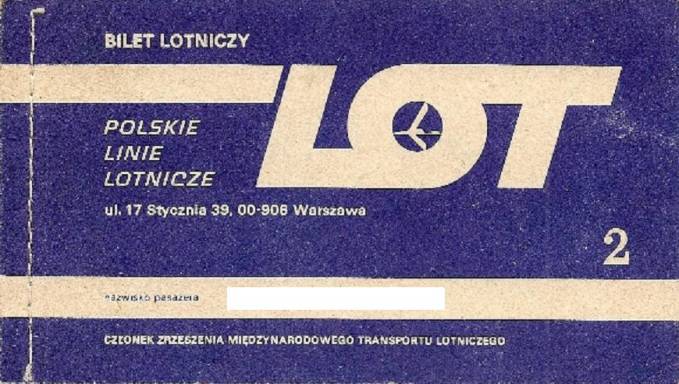
Unfortunately, the ticket is not everything. We had to get a passport and a visa. During this period, only talked about possible facilitations. However, communism held on tight and it took many kilometers to travel through the offices. The Polish authorities posed problems. Including the Military Replenishment Command. The Italian Embassy did not make any great difficulties. They demanded a sufficient amount of currency for the duration of their stay.
Ryanair Ticket. 2011 year.
Currently, in principle, there is no mention of a ticket. In the age of computerization and the Internet, things are simpler. On the website of the selected airline, we book the selected flight (booking), make the payment, print our boarding pass in advance (online check-in) and we are ready to fly. We can print our boarding pass many times. It is valid only with an ID card or passport. We do everything without leaving home. When flying to the Schengen group countries, we do not need passports and visas. All you need is a national identity document. It is even harder to go beyond the Great Water. A visa and passport are required. And with that, we may not leave the airport on the American continent and be sent back to the country on the next plane.

Access from Rome city center to Ciampino Airport. 1976.
At that time, travel to the airport was included in the ticket price. An Alitaly bus was set up at a specific time near the Roma Termini station (communication center of the Eternal City). You had to present a valid flight ticket when boarding the bus. From then on, the passenger was under the care of the airline. Not only that, he knew he would not be late for the plane. The passenger was not interested in which airport the departure will take place. The bus was taken to the appropriate terminal (airport station).
2011 year.
Currently, travel to the airport is organized by each passenger himself. You can go by TAXI for around 40 euros, by bus for 8 euros, by bus for 4 euros. Everything from Roma Termini station. You can also take metro line A for € 1 to Anagina station and then take the Atral bus for € 1.20.
At the airport. 1976 year.
The first thing you noticed at the airport were the numerous shops. Colorful and full of goods. The parking lot in front of the airport was full of cars. There was a lot of traffic on Ciampino. There were many passengers.
After arriving at the airport, passengers were directed to check-in. Even then, there was a separation of departing and arriving passengers. There was a full document control at the check-in desk; ticket, passport, visa. Luggage was checked in. Only a small briefcase or purse was allowed on board. There was no term then - cabin baggage. After check-in, you went through a personal check-in. As a flagship, the passenger walked through the common metal detection gate. Rarely, a passenger was referred for scrutiny. After this check-in, the passenger was in a duty-free zone. And again, more colorful and full of goods stores. Now you could shop, rest on a bench or watch the planes just behind the glass. It was waiting for a cruise to be called and to which gate you have to line up.
2011 year.
Over the years, the airport has grown. Maybe not stunning, but still. It is still colorful and has many shops. There are a lot of check-in stands, to which now routes marked with colored tapes lead. There is still an arrival and departure terminal. The cool one has grown a lot. In 2007, a large departure hall was added to occupy part of the aircraft parking area. A large waiting room and a dozen gate stands are located here. The hall does not make a big impression because it was built at a low cost and resembles a production hall. Most of the former off-road part was taken over by a large store.
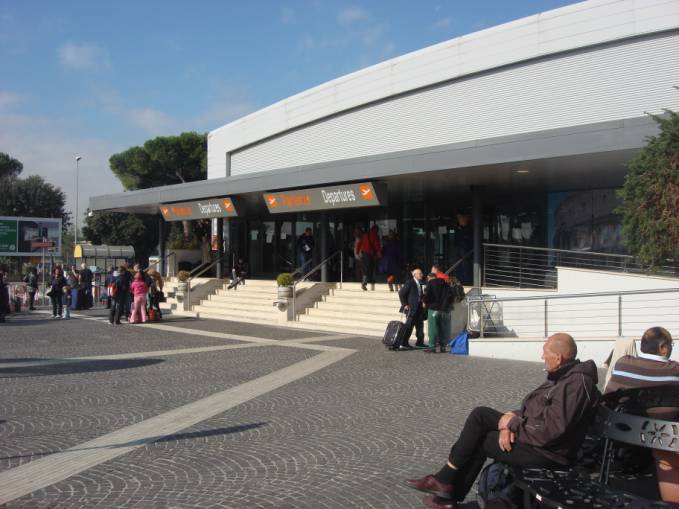
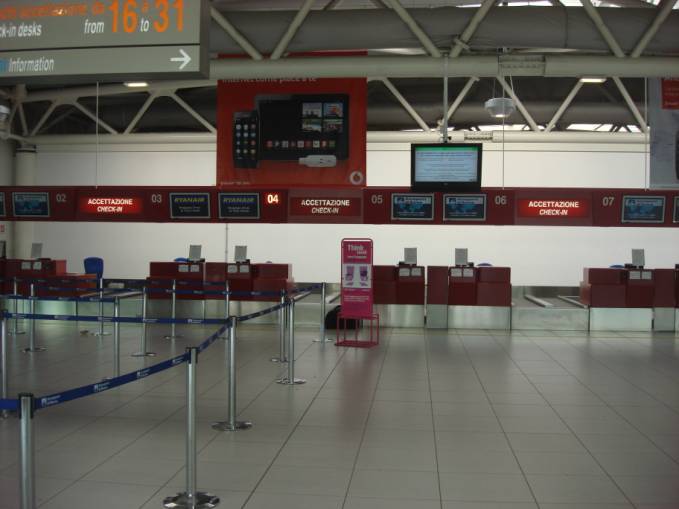
On a plane. 1976.
The Tu-134 plane was close, so you went to the plane on foot. The flight attendant was operated by LOT and an airport employee. The group was small, because the Tu-134 took 72 passengers on board, and the Tu-134 A took 84 passengers. At that time, less than 50 people boarded the plane. Seats were reserved, but the small number of passengers allowed a great deal of freedom in choosing a seat.
A few words about the plane itself. It was the Tu-134 A registration SP-LHC No. 3351810. He was given the proper name Janusz Kusociński. Delivered to LOT Polish Airlines in April 1973. The plane was new, so in the fall of 1976, it only had three seasons behind it. It took 84 passengers on board. 2 x 2 armchairs. But legroom for tall people was not enough. The aircraft ended service in March 1993. Sold as airplane scrap for the Warsaw Police Headquarters. Received on October 10, 1997. It was set up at a police training ground at Aleje Jerozolimskie in Warsaw, Mszczonowska Street, at Reduta, where it is currently (2005) used to train anti-terrorist police units and the Special Military Formation Grom.
The windows in the cabin were placed rarely, so when sitting by the side, it was not always possible to look out the window, because it might not be there. It was a typical condition of Soviet airliners; Il-18, An-24, Tu-134. What to expect from machines adopted from bomber structures.
The plane had a total weight of 47,000 kg, a top speed of 905 km / h, but a cruising speed of only 750 km / h. The range was from 1,800 km to 2,800 km. It was powered by two two-flow Soloviev D-30 II engines with a thrust of 2 x 66.7 kN. equipped with thrust reversers.
The flight crew consisted of 4 people (captain, co-pilot, navigator, flight engineer) plus 2-3 flight attendants.
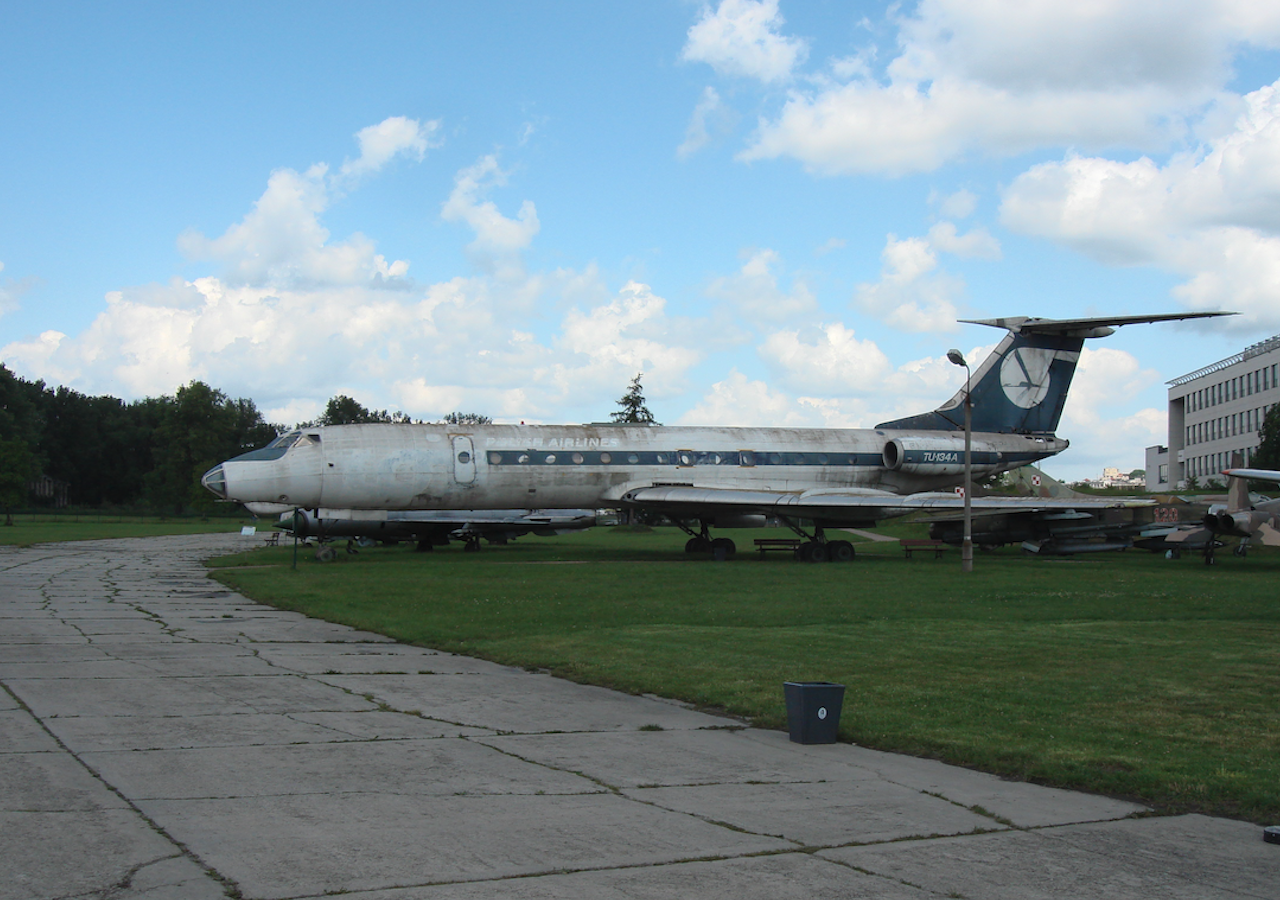
2011 year.
The Boeing 737-800 was on a stand near the arrival terminal. So the buses landed on the plane. As many as three, because the plane took 189 people on board (1-class configuration) and it was almost full. 3 x 3 seats. Each side seat has a window.
The Boeing 737-800 plane is the most popular passenger plane in the world. To date (2011) over 6,200 units have been built, and the order is for a further 3,000 units.
It was almost a new Ryanair Boeing 737-8AS aircraft, registration EI-DYN No. 36576 (2637), put into operation on June 12, 2008. Gross weight is 79,010 kg, maximum speed 876 km / h, and cruising 840 km / h. Range with a load of over 4,000 km. Drive unit, two fan engines CFM 56-7 B 27 with a thrust of 2 x 121.4 kN. with reverse thrusters. The crew consists of two pilots and 4-5 cabin crew.

Flight. 1976 year.
After taking a seat on the plane, the door was immediately closed and the gangway was towed away. In the loudspeakers we heard the voice of the captain who introduced himself and gave the basic flight parameters and the expected weather at the airport in Krakow. He spoke Polish and English. The vast majority of passengers on board were former compatriots. At that time, two flight attendants were already walking on the deck, offering sweets (usually they were typical candy, which had to be sucked). At that time, it was a practice used by almost all transport companies to stop possible passenger nausea. Each passenger had a gray paper bag at their disposal. At the same time, the cabin crew checked the fastening of the seat belts. In the front part, above the entrance, there was a clearly visible inscription - Buckle up. It only went out when the plane was at high altitude.
A few words about the staff. Polish flight attendants were always of unprecedented appearance, of extraordinary beauty, in impeccably cut navy blue suits. Always smiling and extremely polite. Unpleasant situations on board occurred extremely rarely. Then a mechanic or a co-pilot from the flight deck to help the flight attendants.
The Tu-134 A from the parking stand was un-taxied on its own engines. He efficiently followed the taxiway to the runway and stopped there. The take-off took place in the direction of 15, or 150 degrees, almost south. After a while, you could hear a growing noise and trembling of engines going up to full throttle. After a while the wheel brakes were released and the plane lurched forward. He accelerated efficiently. The pilot used almost the entire length of the runway. It jerked up the front wheel and the plane almost immediately took off from the ground. The machine was rising smoothly. At an altitude of about 1,000 m, the crew headed the plane to the north-east, to Poland.
The flight itself was not attractive, because there were clouds all over the route. We flew either in or over them. Apparently, they reached 7,000 m. After reaching the cruising altitude, flight attendants appeared, serving the meal. The rule was that if the flight lasted more than two hours, the passenger would receive a meal. The meal was served on a white plastic tray with special cavities for two or three molds and a plastic cup. Everything was covered with a transparent lid. The meal was in the style of a dinner. There was often potato pireas, a piece of meat, a vegetable salad, fruit, a buttered croissant, a drink. It was tasty. Those who did not eat were afraid of torsion rather than bad taste.
It was relatively loud on the plane and it was difficult to talk. But then all the planes were noisy. The foundations for the fight against noise were just being developed.
After the meal, flight attendants distributed Polish newspapers and color magazines. Some asked for tea or coffee. Meal, coffee, tea, newspapers were included in the ticket price.
The flight itself took about 1 hour 50 minutes. Not because the plane was slower. But because at that time designated corridors were flown over the countries of the socialist camp. The route was not always straightforward. The flight was to the following turning points; Zagreb in Yugoslavia, Bratislava in Czechoslovakia, Kraków-Balice.
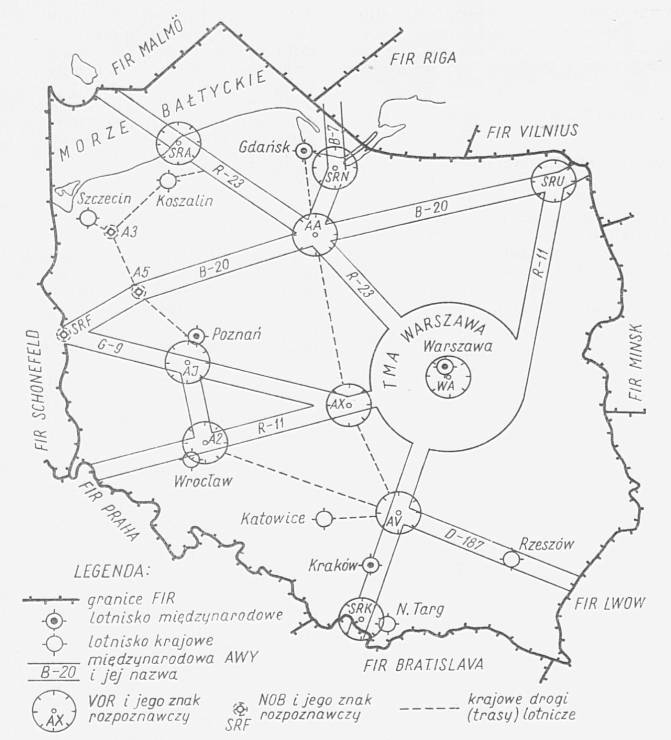
2011 year.
It takes a long time to board and seize passengers. After all, it's over 180 people. Low-cost airlines don't play with booking seats on board. The rule of thumb is first come, first served. In order to be the first to board, you can purchase the so-called Priority Entry or the privileged passenger status (differently on different lines). But you pay extra for that.
Almost everyone had the so-called cabin luggage, i.e. a suitcase or bag with strictly defined dimensions. There are special racks at the airport. If this rack can accommodate luggage, it will definitely fit in the glove box above the passengers' heads. The cabin crew takes care of the proper sequence of loading the luggage and, if necessary, moves and stuffs it. So I do not advise you to transport Christmas decorations. Cabin luggage (luggage with you) makes the journey much easier. We do not wait for it at the destination airport and the risk of its loss is minimized. We are also sure that it will not fall down during transport and will not be damaged. And its size is not that small at all. New planes have larger and larger cabin trunks.
After taking a seat on the plane, the gangway was folded down and the door was closed. In the loudspeakers we heard the voice of the captain, who introduced himself and announced the basic parameters of the flight. He spoke in English and Italian. The plane has not moved yet and the flight attendants have begun standard safety training; buckle fastening, emergency landing position, use of air masks and life jackets. First in English, then in Italian and Polish. At the same time, the cabin crew checked the fastening of the seat belts. A seat belt pictogram glowed above each passenger. It only went out after take off.
A few words about the staff. Now the staff on board the planes is mixed. Usually two women and two men. There are only two pilots in the closed flight deck. There would be no one to come to the aid of the flight attendant to calm the riotous passenger. Maybe another traveler? But there is no certainty. These must be trained people.
The main engines of the aircraft are started from the constantly working APU system. The Boeing 737 from its stand is pushed onto the taxiway by a special tractor that connects to the aircraft via the front landing gear. These tractors are now drawbarless and are referred to as Push-Back. It's relatively quiet on the plane, apart from chatty passengers. They make the same noise as modern CFM 56-7 B 27 engines. The plane takes off and taxi to take-off at a speed of about 40 km / h. Stops on a runway in front of a runway. When it is cleared to take off, it starts and does not usually stop at the beginning of the runway anymore, but takes off. As a result, it takes a minimum amount of time on the runway and leaves it quickly. This is especially important at airports with one runway and heavy traffic, such as Ciampino and Balice.
The run-up time is 46 seconds. (From the moment of going to DS (RYW) to break away from DS (RYW).). The plane leaves the ground at approximately 1,500 meters. And it pulls a nice elevator up. Airspace control procedures directed the aircraft to the Tyrrhenian Sea. And only after about 30 km, being almost at cruising altitude, did he set a course for Poland.
The flight itself was attractive, as there was excellent visibility on the entire route. There were almost no clouds. Thanks to a camera with a compass and GPS, I was able to accurately open the flight route.
Start 15; 20. Landing 16; 56. Travel time 1 h 36 min. Run 41 seconds. From the moment the chassis comes into contact with DS. (RYW) to a taxi speed of approximately 35 km / h.
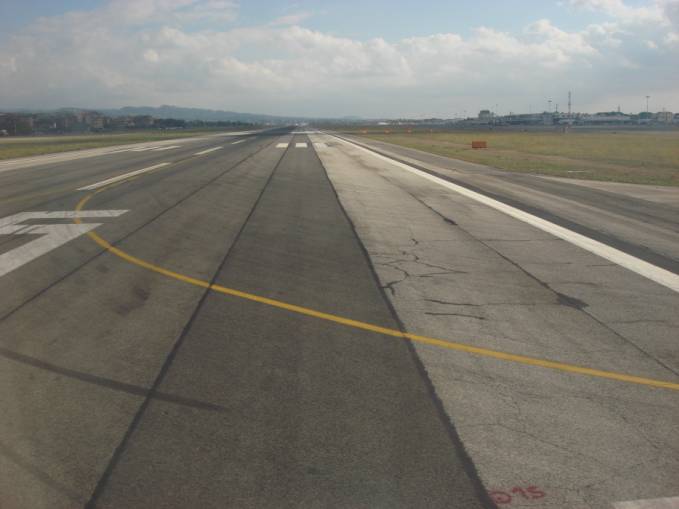
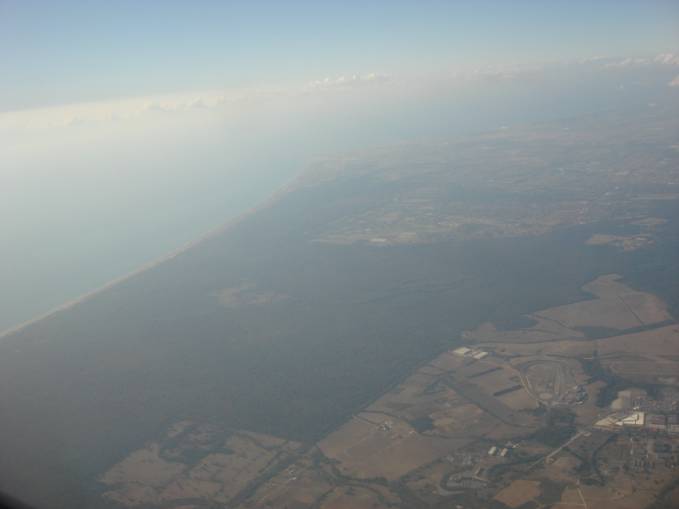
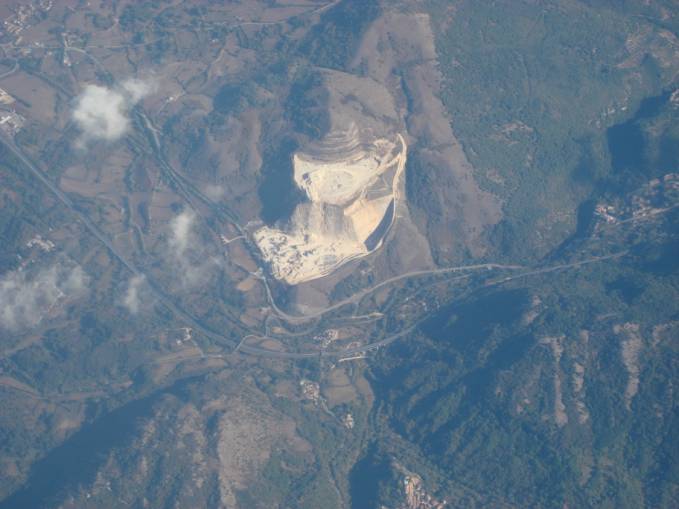
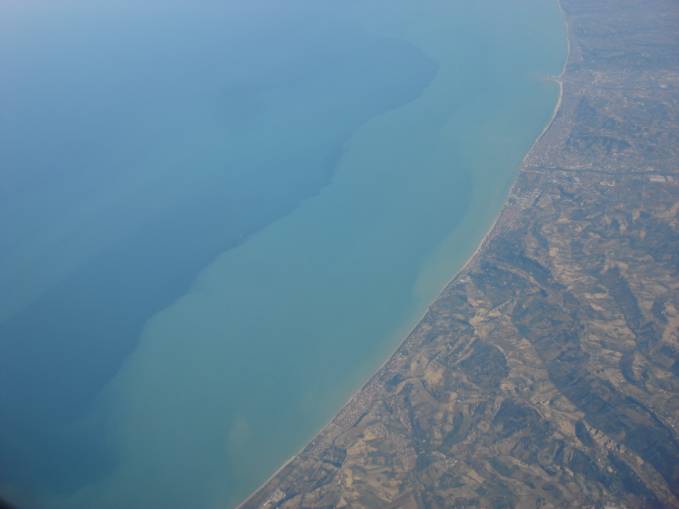
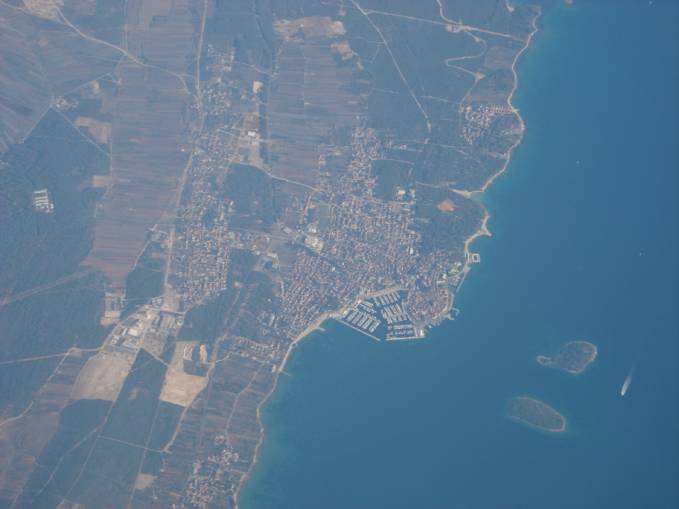
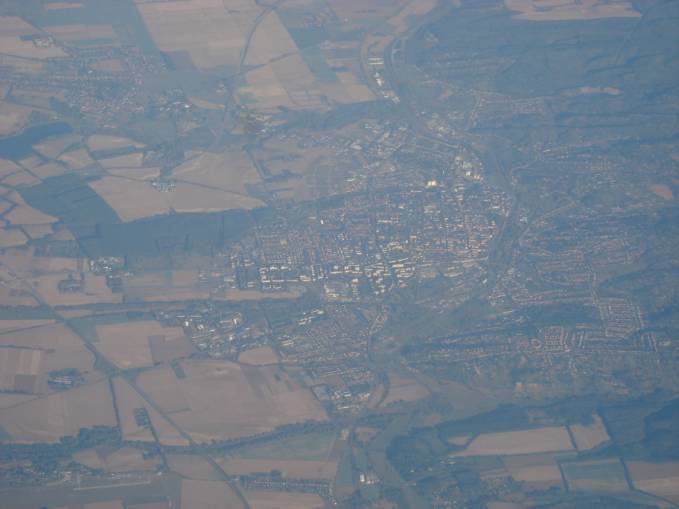
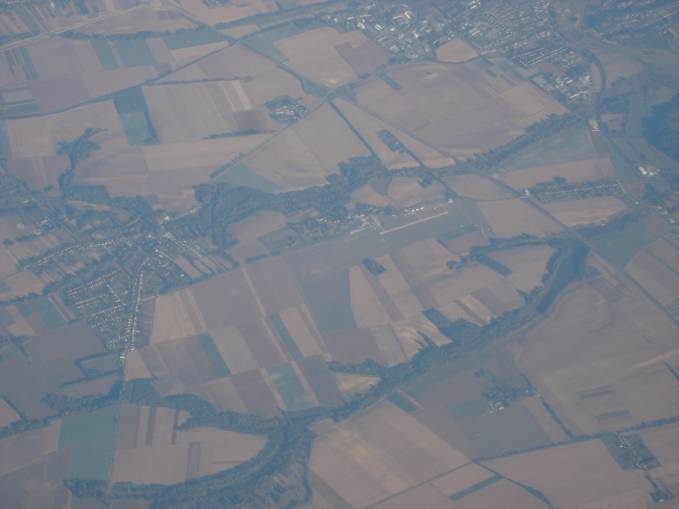
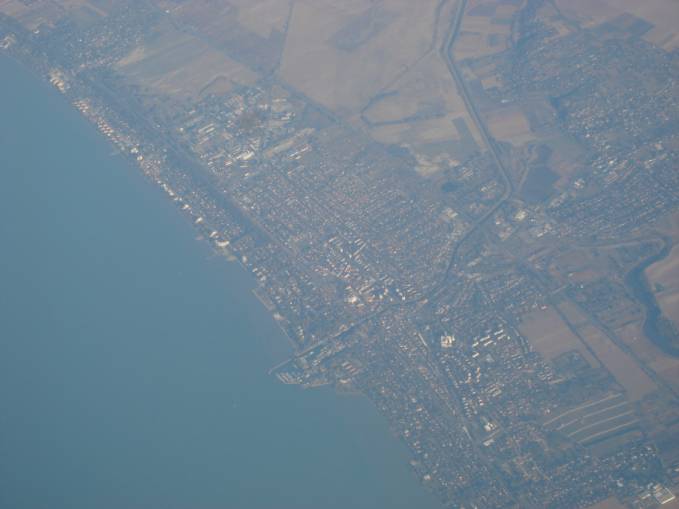
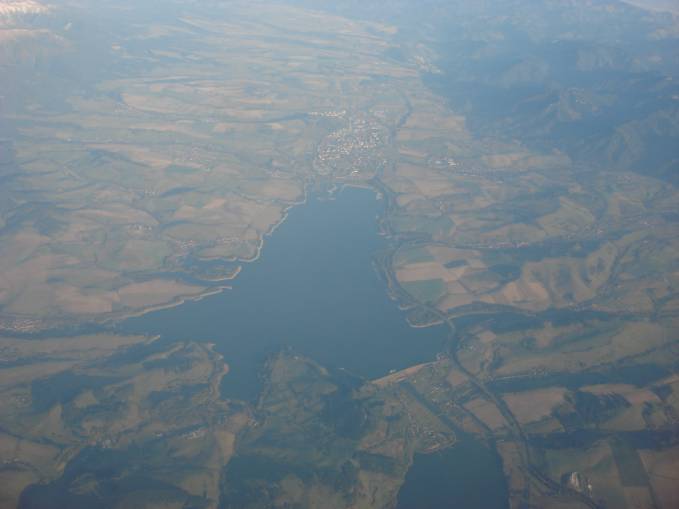
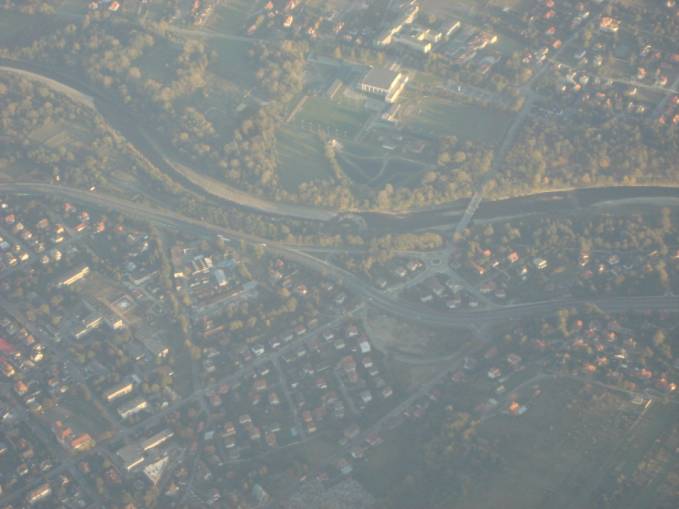
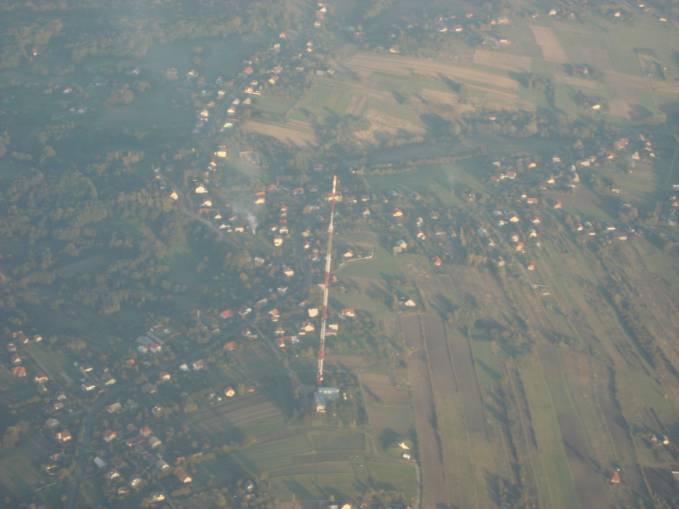
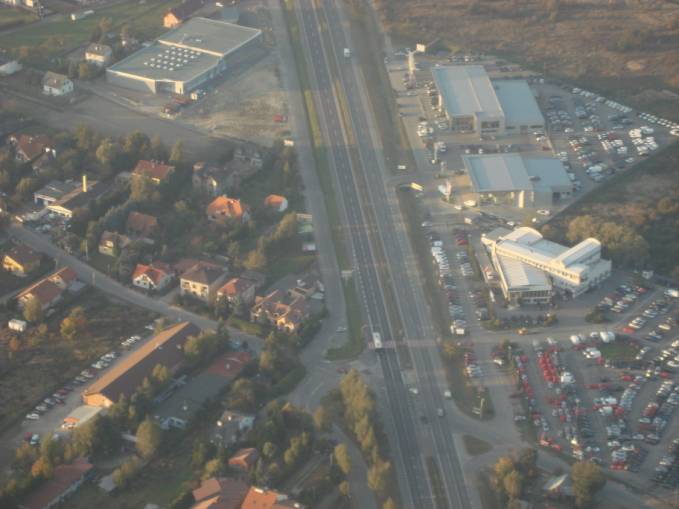

What about the deck itself? Trade flourished. First, a mobile bar with something to eat, then a mobile bar with something to drink, then a mobile bar with something to ... Finally, a mobile bar with tobacco products and alcohol, although smoking and drinking alcohol is not allowed on board (?!). And also a raffle. The cabin crew did not sit down for a moment.
Balice airport. 1976.
At that time, it smelled like provincial and socialism. A small cubic station (port) building. The facade is about 20 meters wide and about 10 meters high. Richly glazed. Put into service in 1964. It was located exactly in the place where currently (2011) is the border guard post. In front of the station, there was a small car park (for about 15 passenger cars), a TAXI stop, and a stop for the MPK bus line No. 209. The access was only from the side of the village of Kryspinów. There was no highway and no highway junction. There were no shops, apart from the RUCH kiosk (open occasionally). The plane of stopping the planes was small. There were barely enough space for three An-24-sized planes, such as the large ones like the ATR 42. If five planes flown a day, it was already quite a move.
In the station building (terminal) itself, there was no division into arriving and departing ones. After all, the traffic was light. There was one LOT ticket purchase counter, one check-in desk. Then there is a control zone with a metal detection gate and border guards. There was no such thing as a duty free zone. There were only benches for passengers waiting to be escorted to the plane.
One more thing. At that time, the most popular destination was flights to Varna (a city in Bulgaria on the Black Sea.)
2011 year.
During these 35 years, changes at the Balice airport have taken place enormous. This is no longer a provincial airport. It is a large international port. The second in Poland, after Okęcie. Annually, it carries over 3 million passengers. Mainly tourists who want to see one of the most beautiful cities in the world - Krakow. With a great history and high culture. Balice maintains air connections with 60 airports in the world. Air traffic will increase even more if one of the airlines has a permanent base at the airport and the military decommissioning of 8 BLot takes place, which is quite realistic. Then the civil airport will receive new areas.
Thanks to the commissioning (in November 2010) of a new taxiway, the number of operations per hour increased from 17 to 30, and thus the airport's capacity. It is also possible to create a second DS. Unfortunately, not parallel to the current one, and the winds in our area mainly blow from the west.
The Balice airport also has an excellent connection with Krakow. MPK communication is the cheapest. Lines 208, 292 and night 902. The price is less than 4 zlotys (0.8 euro). There is a PLK queue. Its advantage is access to the very center of Krakow, within 18 minutes. The current price is PLN 10 (just over EUR 2). There are taxis for around PLN 50. In front of the international terminal, a large multi-storey car park has been opened recently (2011).
Balice currently has two terminals T1 international and T2 domestic. T1 is a terminal worthy of Krakow. There is nothing to be ashamed of. The first stage of its expansion was completed in 2001. Attempts to expand are in progress. Then passengers will board the plane with sleeves, as in Warsaw or Wrocław.
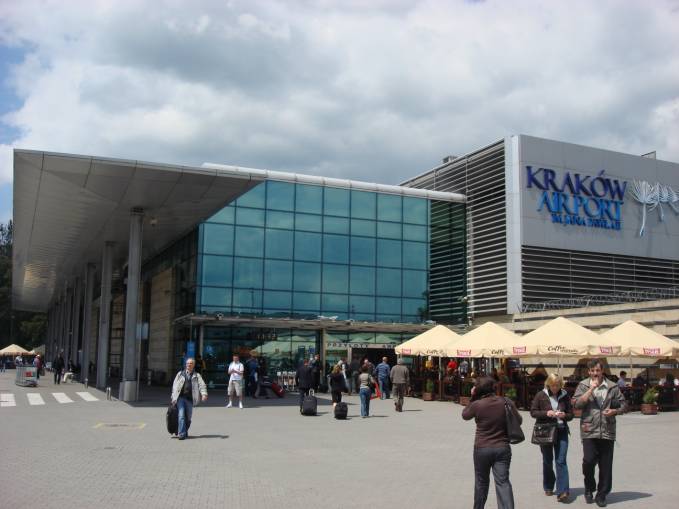
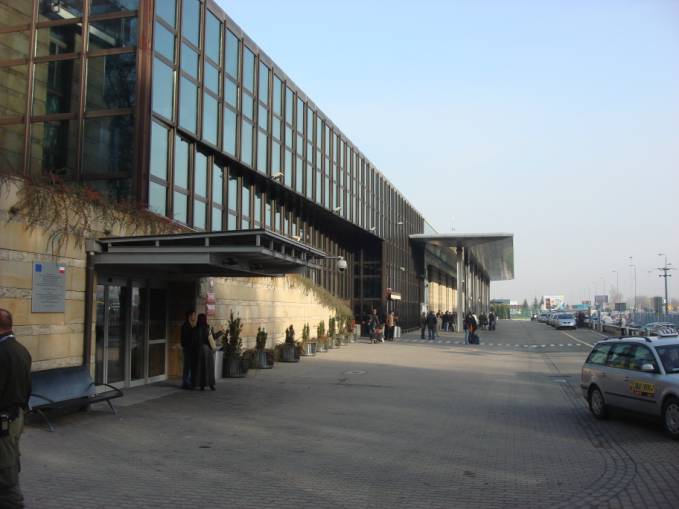
Summary.
A lot has changed in 35 years. There are modern planes. Better service for travelers. You can see that Balice Airport has caught up with the free world. We have nothing to be ashamed of. I am proud to be a Pole and I live in one of the greatest cities in the world.
Written by Karol Placha Hetman
